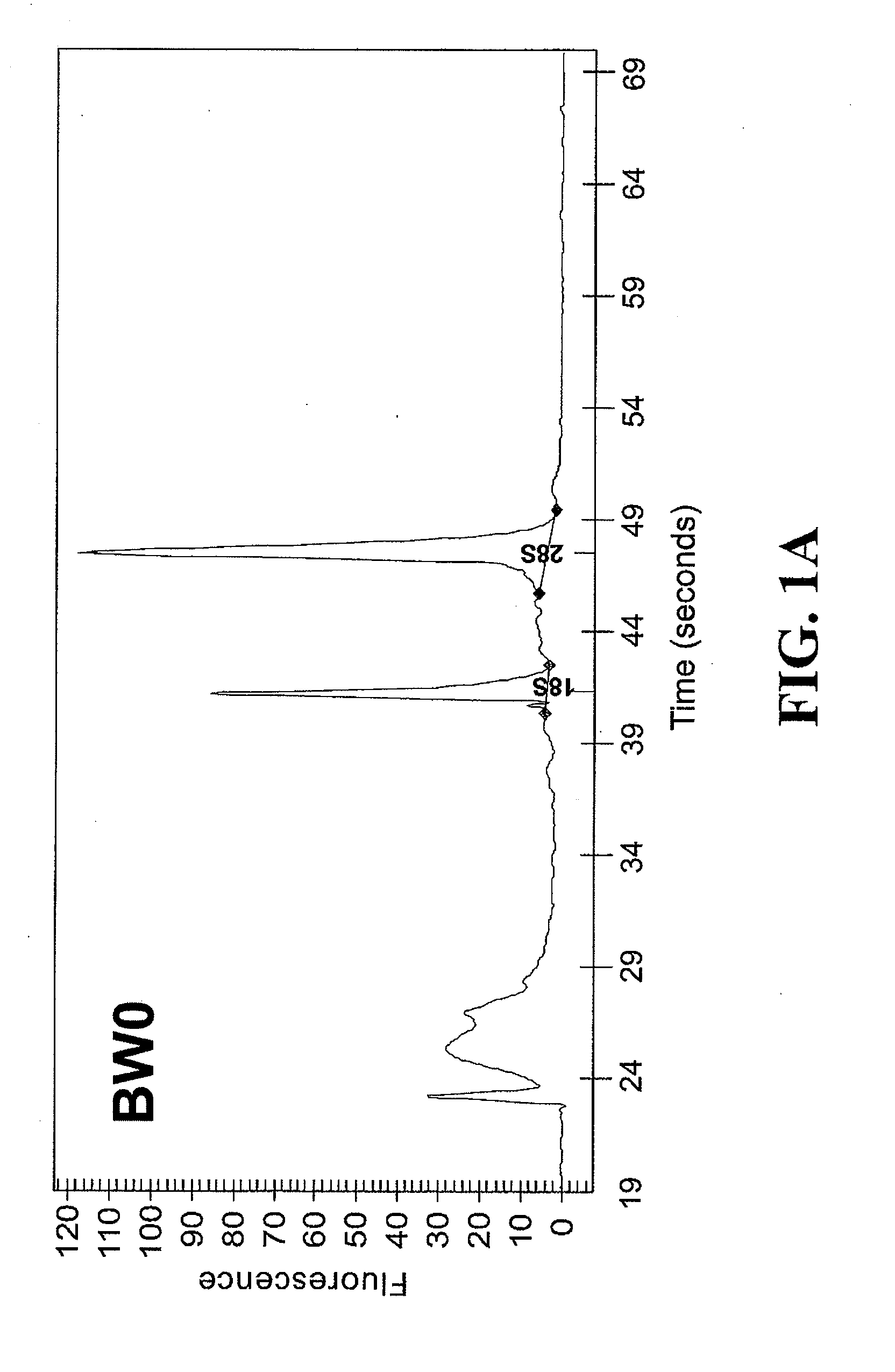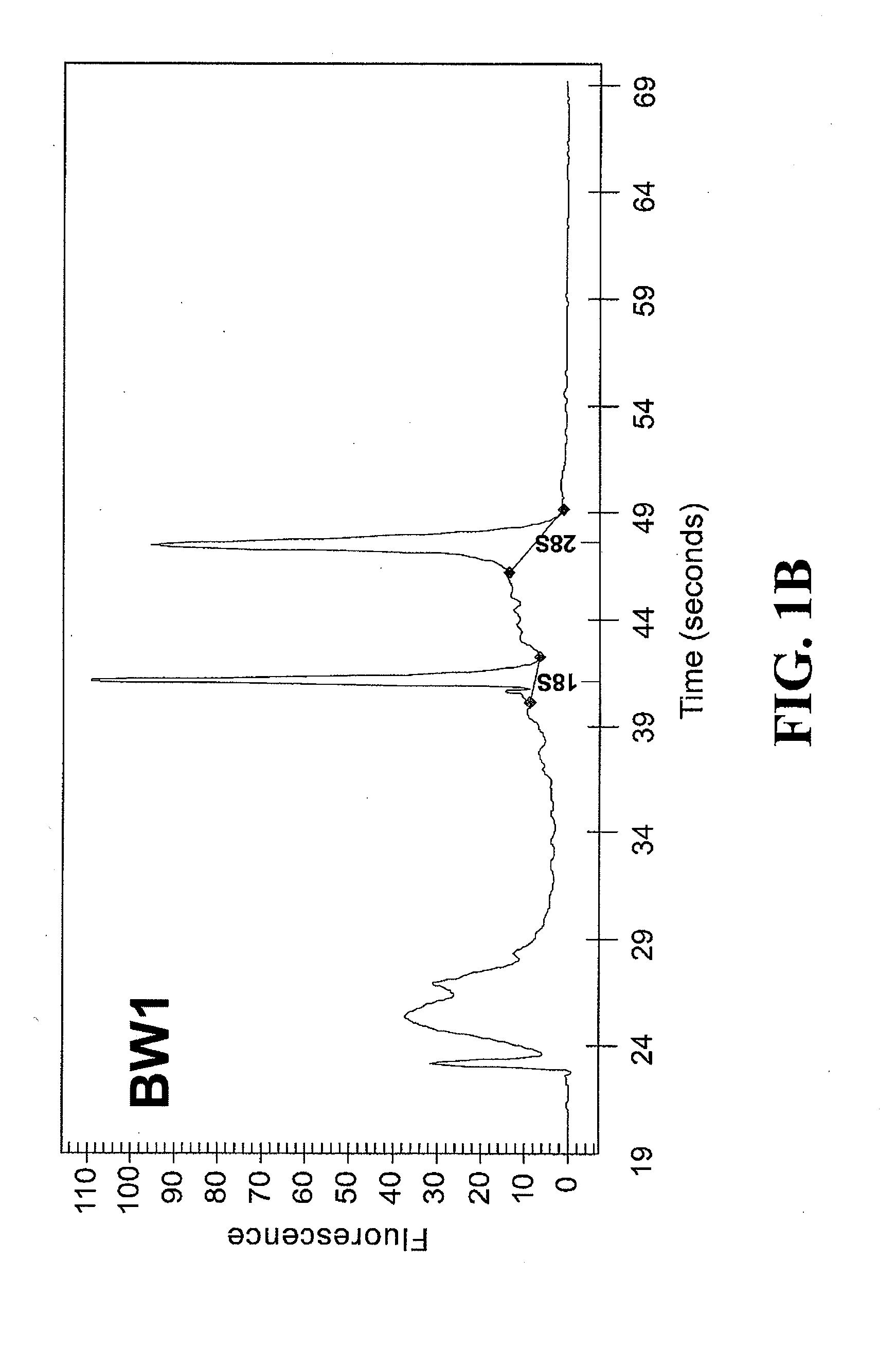Bladder cancer diagnosis and/or prognosis method
a bladder cancer and prognosis technology, applied in the field of health care, can solve the problems of invasive and rather unpleasant techniques for patients, limited detection of low-grade tumors, and inability to clearly identify cancer-causing agents in tobacco products, so as to reduce the quality of life of patients and increase the economic burden of healthcar
- Summary
- Abstract
- Description
- Claims
- Application Information
AI Technical Summary
Benefits of technology
Problems solved by technology
Method used
Image
Examples
example 1
5. Conclusion of Example 1
[0122]It is possible to use bladder washing RNA to deduce the gene expression profiles of the corresponding bladder tumors, both by means of cDNA microarrays and of qRT-PCR.
Example 2
Initial Determination of Candidate Genes for the Predictive Model
[0123]Once it was known that it was possible to determine gene expression profiles in bladder fluid samples, the next objective was to obtain characteristic gene expression data that was as extensive as possible. The decision was made to follow the strategy of starting by analyzing the largest possible amount of genes in a reduced number of samples, in order to progressively analyze an increasingly smaller and more selected amount of genes in a more extensive series of samples in successive phases.
[0124]The protocol in turn involved the establishment of very strict quality controls in all the critical steps of the process. This included obtaining biological samples with the desired characteristics in the operating ...
example 2
6. Conclusion of Example 2
[0137]Taking into account the results observed by means of the quantification of gene expression using two completely independent techniques in a small group of genes, it can be extrapolated that the expressions observed by means of microarrays seem to be sufficiently reliable for being used to define a robust group of candidate genes for a subsequent, more extensive and specific analysis.
[0138]In parallel, it was concluded that although the microarrays were suitable for quantifying gene expressions, qRT-PCR was still more accurate, in addition to allowing higher RNA degradation levels in the sample without this negatively affecting the end result.
example 3
First Selection of Candidate Genes
[0139]The final objective of this study was to select a reduced group of genes related to bladder TCC and that diagnostic and prognostic tumor information were obtained upon quantifying their expression. To that end, it has been verified that two techniques can be used, DNA microarrays and quantitative real-time PCR. By means of the microarray technology, thousands of genes are tested in each experiment and a larger amount of RNA with a better quality is needed to conduct the experiments than with the qRT-PCR methodology. Furthermore, the latter is a more accurate technology and the exact number of genes of interest can be quantified. Therefore, the decision was made to use the TaqMan Low Density Array (TLDA) technology, based on qRT-PCR, in the subsequent phases of the study.
1. Selection of 384 Genes for the TaqMan Low Density Arrays (TLDA) Cards
[0140]TLDA are microfluidic cards containing the lyophilized primers and TaqMan probe for a maximum of 3...
PUM
| Property | Measurement | Unit |
|---|---|---|
| volume | aaaaa | aaaaa |
| volume | aaaaa | aaaaa |
| pH | aaaaa | aaaaa |
Abstract
Description
Claims
Application Information
 Login to View More
Login to View More - R&D
- Intellectual Property
- Life Sciences
- Materials
- Tech Scout
- Unparalleled Data Quality
- Higher Quality Content
- 60% Fewer Hallucinations
Browse by: Latest US Patents, China's latest patents, Technical Efficacy Thesaurus, Application Domain, Technology Topic, Popular Technical Reports.
© 2025 PatSnap. All rights reserved.Legal|Privacy policy|Modern Slavery Act Transparency Statement|Sitemap|About US| Contact US: help@patsnap.com



